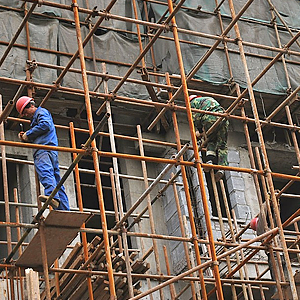Scaffolding is a brief design that is normally produced using metal posts and wood boards and used to help construction laborers, investigators, cleaners, and other people who need to work at the level. A scaffold, additionally called scaffolding or arranging, is a transitory design that permits individuals to remain on a steady stage for work at a level or in difficult to arrive at places.
The utilization of scaffolding dates as far back as the stone age truth be told, there’s proof that Scaffolding Hemel Hempstead was utilized quite a while back by the people who made the well-known Paleolithic cavern compositions.
Pictures of scaffolding have been found on antiquated antiquities, for example, the Berlin Foundry Cup, a Greek drinking cup made in the fifth century BC. People groups as different as Nubians, Egyptians, and Chinese have reported the utilization of scaffolding for developing tall structures, utilizing simple scaffolds made of wood and tied at the top with ropes.
Scaffolding Parts
Here are the parts used to make scaffolds:
Standards. This is a structure that comprises vertical individuals upheld on the ground, on drums or implanted into the ground.

Records. Tubes with a case wedge fixing gadget on their end that is situated evenly between two guidelines, characterizing the length of the scaffold cove.
Supports. Supports are fixed corner to corner to the norms.
Putlogs. Putlog associates the divider being chipped away at and the record. A putlog opening is made on the side of a structure to get a putlog.
Transoms. A transom is a sort of record putlog that is upheld by the two records.
Harness. Harnesses support one finish of the putlog and are utilized to connect an opening in a divider.
Boarding. During the functioning system, guests act as flat stages for supporting laborers and materials.
Monitor rail. A rail is set up at a similar level as a record.
Toeboard. An equal arrangement of sheets is upheld on putlogs, which gives security at the functioning stage level.
Stepping stool scaffolding. Scaffolding stepping stools permit laborers to effortlessly climb and slide the developed scaffold.
Scaffolding wheels. Wheels at the lower part of the scaffold permit simple development of the scaffold starting with one spot and then onto the next.
Benefits of scaffolding:
There’s an explanation scaffolding has been utilized for millennia — it works. Right up until today, scaffolding stays quite possibly the most valuable and effective way for an individual to work at the level.
Here are the essential benefits of involving scaffolds for work at the level:
Access. Scaffolding can permit unhindered, stable admittance to practically any region of a design
Balance. Scaffolds put laborers on a firm balance, empowering them to adjust themselves in various situations while working.
The simplicity of construction. Scaffolding is moderately simple to collect and dismantle, and can be set up and brought down genuinely quickly.
Enduring. Most scaffolds can keep going for quite a while, whether they’re produced using wood or steel.
Security. Security is one of the main benefits of scaffolding since it gives laborers a steady stage for their work. That being said, the best answer for work at height is to lessen or try and eliminate the requirement for an individual to be available — in the last part of this aide, we’ll cover how robots can assist examiners with diminishing their need to work at the level.
Fills in as an extension. Various construction exercises expect laborers to take long and twisting courses to arrive at specific areas hands-on location, which is a gigantic exercise in futility. Connecting focuses in scaffolding can assist with tackling this issue by lessening the distance that specialists need to travel.

